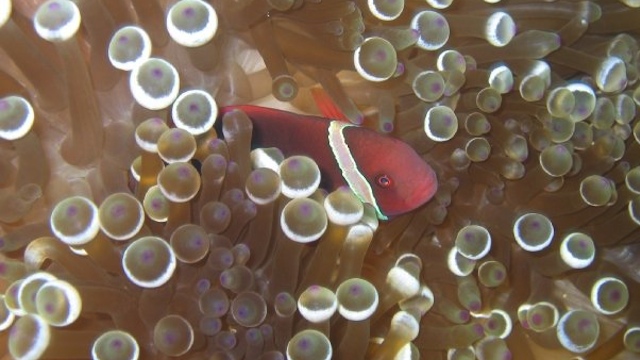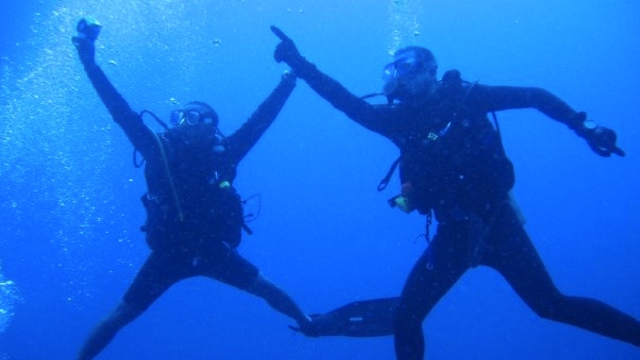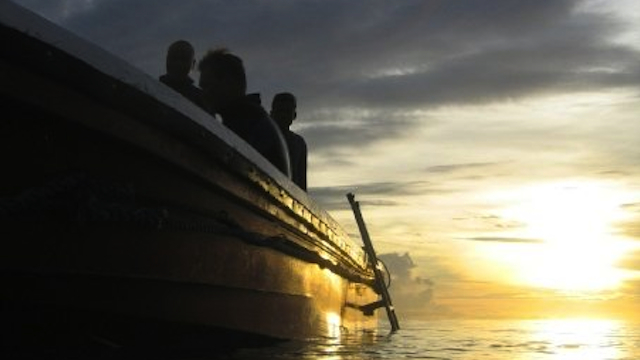SUMMARY
This is AI generated summarization, which may have errors. For context, always refer to the full article.

MANILA, Philippines – Almost 5 years ago, I arrived in Puerto Princesa, Palawan, excited about boarding the boat for my first liveaboard scuba diving trip to Tubbataha Reefs Natural Park.
I had heard such amazing stories and riveting reviews about Tubbataha from the diver community in Manila that as soon as I got into the sport, I decided I would not miss it for the world.
By that time — June 2008 — I had only lived in the Philippines for a year and a half, so I did not know the country as well as I do today, and was even thinking about moving somewhere else — Indonesia, Thailand — to get to know more about Southeast Asia.
Manila felt crowded and polluted. I’m not really a beach person so Boracay didn’t impress me that much, and in general most natural beauty spots seemed to have been spoiled by development, failure to keep them clean and lack of enforcement of environmental laws.
What I saw underwater in Tubbataha made me change my mind and decide to stay in the Philippines for a while longer.

Explosion of marine life
When I went to Tubbataha I had already been to many of the Philippines’ best dive spots, such as Malapascua, Cebu, famous for the thresher sharks, or the World War II Japanese shipwrecks in Coron, Palawan.
It was truly magnificent diving, I could not complain: the reefs were always in decent condition, the visibility was good and the amount and variety of fish and coral had always made the trip — especially in Malapascua’s case a long one — worthwhile.
But barely minutes into my first dive at Tubbataha, at first I could not believe what I was seeing: absolutely pristine coral in its full bright colors not affected by bleaching, no trace of trash and scores of parrotfish, jacks, moray eels, sharks and turtles greeting me and my dive buddies along the way.
The explosion of marine life was no doubt enabled by the absence of a the crown-of-thorns starfish, a parasite that feeds on polyps — the micro-organisms that make up the coral — and unfortunately plagues most Philippine reefs.
Another pleasant surprise was almost no bleaching, a loss of pigmentation in the reefs that starts when the ecosystem becomes incapable of sustaining the polyps due to an increase in water temperature, dynamite fishing or changes in ocean chemistry caused by human activities.

Fish, fish and more fish
During the first few dives, my buddies and I would signal each other holding our right hand outstretched and pointed upward on our herds, every time we saw a shark, generally white tips or gray reef sharks.
By the second day we had seen so many already that we stopped calling attention to them.
Apart from sharks, the reefs were stocked like a supermarket full of stingrays, lionfish, clownfish, Napoleon wrasse, parrotfish, jacks, sweetlips, and quite a few turtles, one of which I was able to follow around for such a long time I almost thought about grabbing one of the flippers and introducing myself.
At night, many of the larger animals vanished to rest but a completely new set of characters showed up: pygmy seahorses, crabs, lobster and moray eels to be found in every nook and cranny of the reef.
It was a bit disappointing that I was not lucky enough to spot a manta ray or a hammerhead shark. I spent half a dive waiting in the blue water for a hammerhead shark, checking my buoyancy to make sure I didn’t go too deep and risk decompression sickness.
The large pelagics failed to grace us with their presence, but it didn’t matter, as every dive was so thrilling that after spending over 4 hours underwater each day, we still wanted more and more.

Protected area violated
Before the end of our trip, the boat management informed us that we would be visiting the ranger station, the only part of the sandbar area where tourists are allowed to set foot.
The rangers gave us a glimpse of their daily life in Tubbataha, where these mostly Coast Guard and Navy personnel are tasked with patrolling the area to make sure no fishing boat or unauthorized vessel penetrates the 97,030 protected area recognized in 1993 by UNESCO as a World Heritage Site.
Sadly, on Thursday, January 17, a US minesweeper not only entered the marine park illegally but ended up running aground after crashing against the coral and burying its hull at least 10 m deep into the precious organisms that sustain marine life.
I was asked to report on the incident, which instantly triggered my anger against the US Navy for allowing one of its boats to venture into a protected area.
Tears of frustration briefly ran down my face when I discussed the incident with park manager Angelique Songco and my editor, who suggested I write a piece about how I felt.
Songco said that the Americans can expect to pay P12,000 per sqm of damaged reef, but is that enough?

What to do now
Even an inch of destroyed reef takes years, sometimes decades to replace.
When coral is destroyed, the fragile balance of the marine ecosystem is put in danger, as the polyps are but the first layer of underwater food pyramid that keeps not only small fish but even the biggest sea animals like whales and sharks alive.
Dead coral is also the saddest sight for a diver.
After enjoying Tubbataha, our transition trip — last of the March-June official season — took my group to Apo Reef, an excellent diving spot just west of Mindoro which nevertheless seemed to us then like a graveyard compared to the amount of marine life we had just witnessed in the Sulu Sea.
I just hope the amount of damage caused by the American ship is minimal.
The US Navy should apologize to the Filipino people for the incident and pay not only the designated fee but assist the rangers and park management in rehabilitating the reef destroyed by the boat.
Political issues aside, I am still angry and today is a sad day for a scuba diver. – Rappler.com
Add a comment
How does this make you feel?
There are no comments yet. Add your comment to start the conversation.